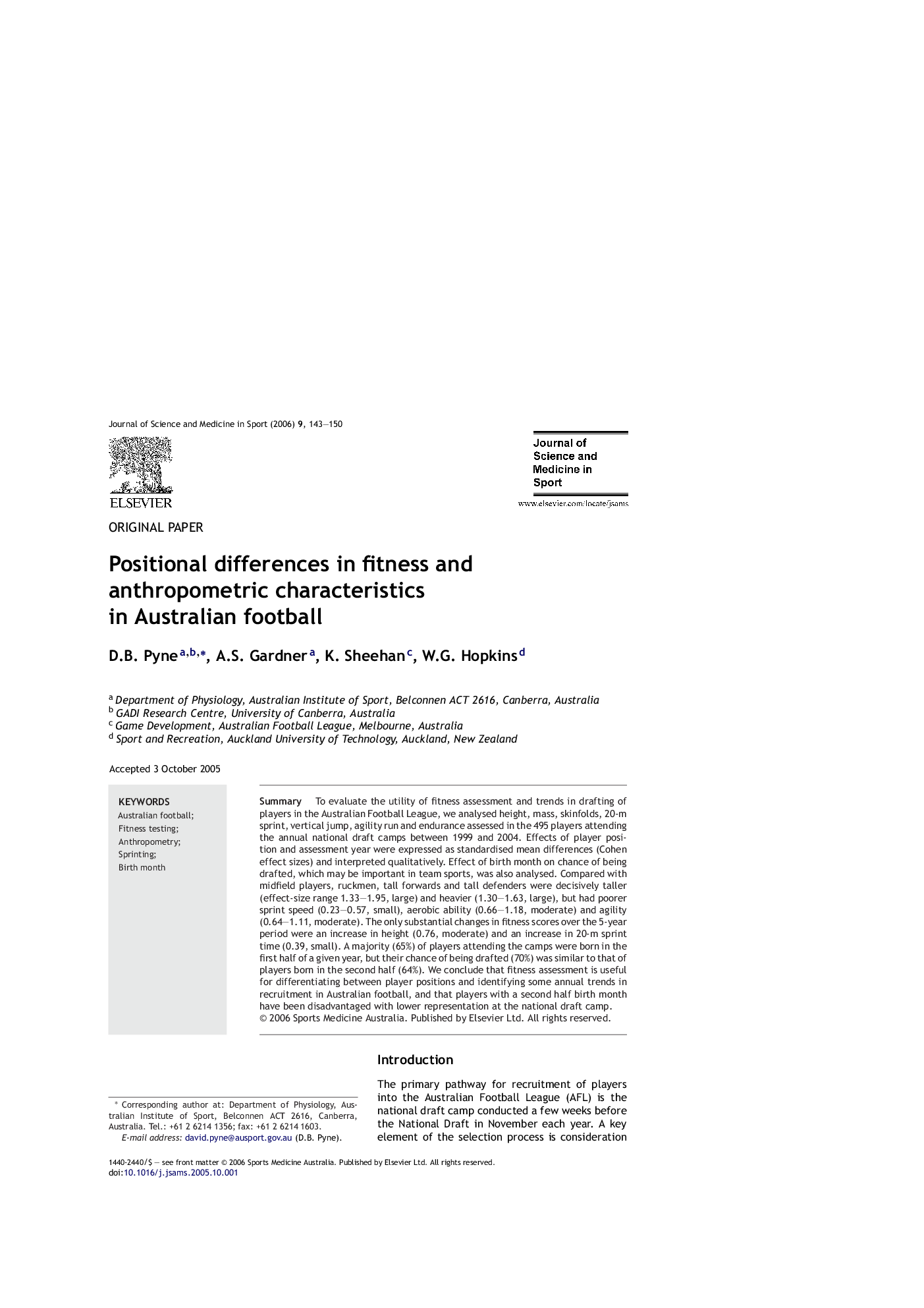| Article ID | Journal | Published Year | Pages | File Type |
|---|---|---|---|---|
| 2701934 | Journal of Science and Medicine in Sport | 2006 | 8 Pages |
SummaryTo evaluate the utility of fitness assessment and trends in drafting of players in the Australian Football League, we analysed height, mass, skinfolds, 20-m sprint, vertical jump, agility run and endurance assessed in the 495 players attending the annual national draft camps between 1999 and 2004. Effects of player position and assessment year were expressed as standardised mean differences (Cohen effect sizes) and interpreted qualitatively. Effect of birth month on chance of being drafted, which may be important in team sports, was also analysed. Compared with midfield players, ruckmen, tall forwards and tall defenders were decisively taller (effect-size range 1.33–1.95, large) and heavier (1.30–1.63, large), but had poorer sprint speed (0.23–0.57, small), aerobic ability (0.66–1.18, moderate) and agility (0.64–1.11, moderate). The only substantial changes in fitness scores over the 5-year period were an increase in height (0.76, moderate) and an increase in 20-m sprint time (0.39, small). A majority (65%) of players attending the camps were born in the first half of a given year, but their chance of being drafted (70%) was similar to that of players born in the second half (64%). We conclude that fitness assessment is useful for differentiating between player positions and identifying some annual trends in recruitment in Australian football, and that players with a second half birth month have been disadvantaged with lower representation at the national draft camp.
